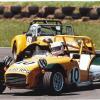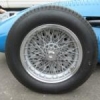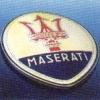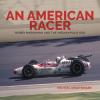Purely by accident I just saw on Wikipedia that not only was Phil Hill World Champion but Ritchie Ginther was 4th and Dan Gurney was 5th in the standings. They were only bettered by von Trips in 2nd and Moss in 3rd place. Having studied the history of Formula 1 for 50 years i was astounded that I had never caught on to the fact that three Americans finished in the top three spots in the 1961 World Championship.
One might have thought at the time that Americans were going to take F1 by storm. Not only these three but Masten Gregory was also a fairly regular competitor. And at the US Grand Prix at the Glen, the following were one-off entries:
Roger Penske
Hap Sharp
Jim Hall
Lioyd Ruby
Walt Hansgen
But this seems to have been the high water mark of American involvement in the World Championship. From the mid-sixties onward, there were never more than two or three even competing. and in latter decades it was truly an exception to even find an American in an F1 cockpit.
This is in spite of the large number of outstanding American drivers that have emerged in the decades since 1961. I can speculate as to the reasons for this but I am curious to hear what others may see as the reason that American racers have been such a rarity in Formula One.
Your thoughts?



























